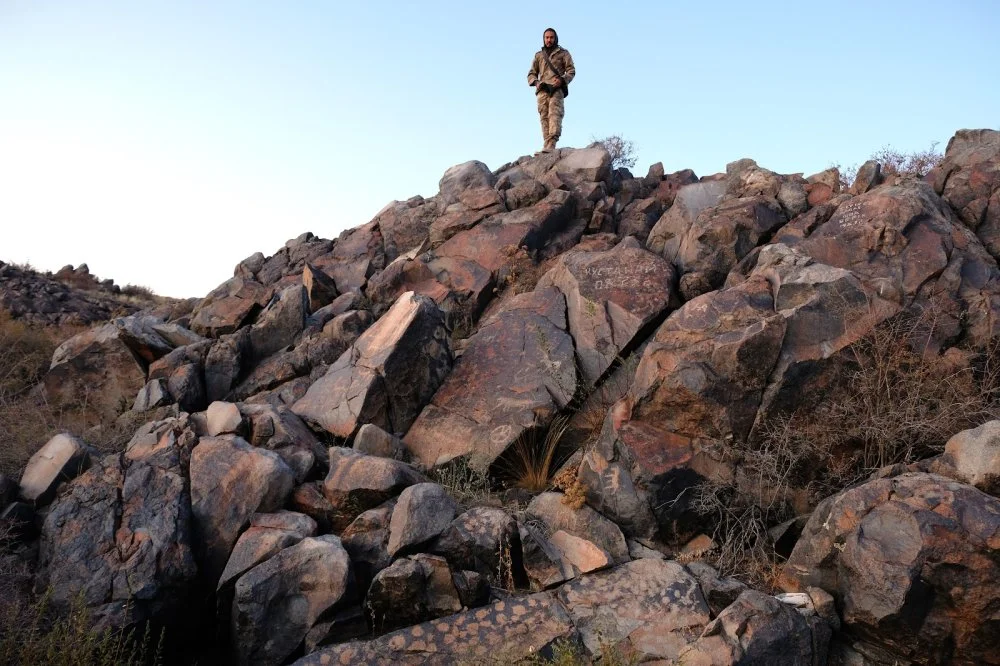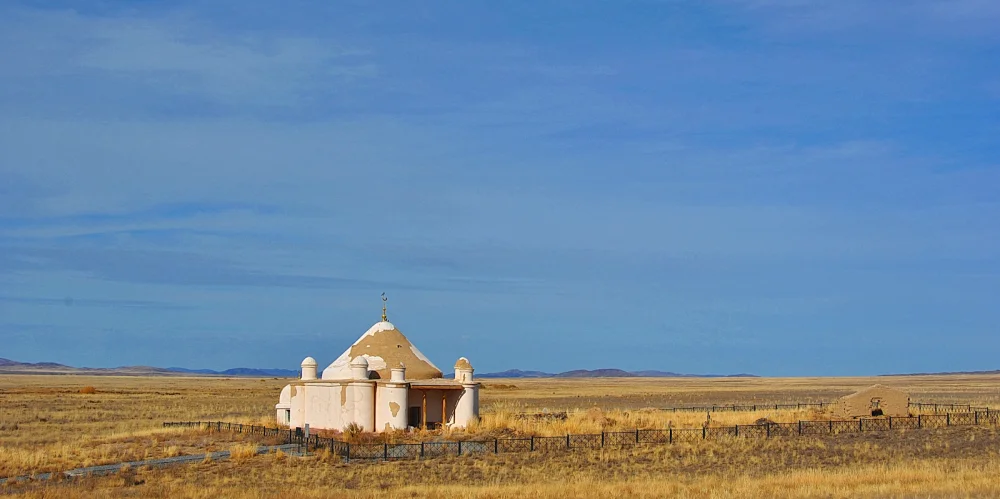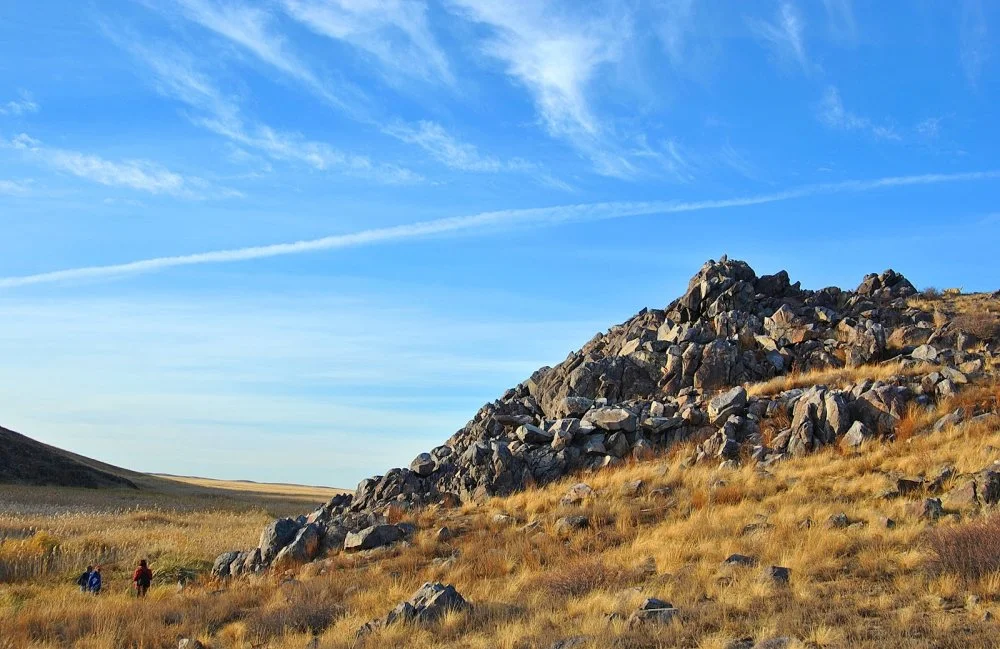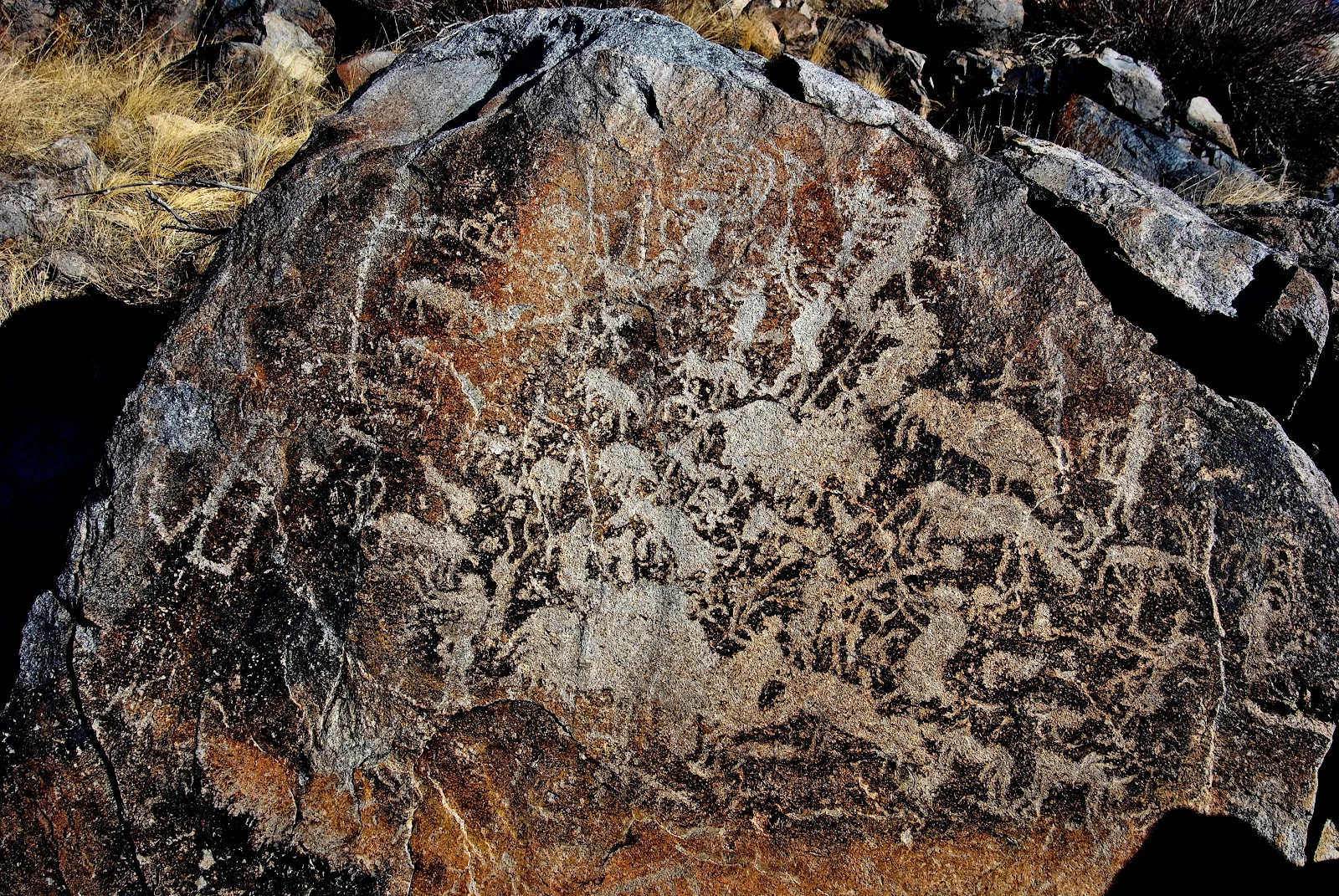The heaviest book in the world, the " Codex Gigas" from the library of Charles University in Prague, weighs 75 kg. The "Stone Book" from the Shunak sanctuary in the Karaganda region is definitely more than a ton, but it didn’t make it into the Guinness Book of Records because the narrative is written not with letters or hieroglyphs but with pictures.
The Shunak cluster is unique in every way, both in the repertoire of its petroglyphs and its location. It is situated on the edge of Betpak-Dala, the "Hungry Steppe," a territory considered, and still considered, difficult to access and poorly suited for living, even though it’s only about 70 km from the Kiik railway station.

Shunak Cluster/Olga Gumirova
Fierce blizzards sometimes bury the guest house near the mausoleum of Agybai Batyr up to the roof in winter. In summer, scorching heat reigns here. Even for modern people in reliable jeeps, this place is uncomfortable. Yet, during the Bronze Age (2000-800 BC), people came here for some reason and even created a large sanctuary on the bank of a small river with a wealth of cult scenes.

What necessity drove our brave ancestors to travel hundreds, if not thousands, of kilometers?
The petroglyphs confirm that people came here from afar. One of the first researchers of the Shunak cluster, Doctor of Historical Sciences A. N. Maryashev, believed that the petroglyphs of Shunak have analogies with the drawings at Tamgaly Tas (Almaty region) and Saimaly-Tash (Jalal-Abad region, Kyrgyzstan). Later, petroglyph hunters found drawings, similar in both theme and engraving technique, at the Arkharly cluster in Zhetysu.

A.N. Maryashev working/Olga Gumirova
One possible reason for the interest in this inhospitable area is a gold deposit. Not far from the cluster is an abandoned mine where precious metals were extracted in past centuries, and nearby are the remains of ancient settlements.
The stone with the unique petroglyphs was named the "Stone Book" by Khamid Musabekov, the caretaker at the Agybai Batyr mausoleum. The stone is located in the center of the sanctuary and can be observed for hours. The scene depicts 14-15 anthropomorphic figures fighting, praying, and even one fallen figure. It’s a multi-figure narrative—a Bronze Age comic about the life and death of one or more characters, whether human or divine. What exactly the story is about remains a mystery that scientists have yet to interpret.
Perhaps archaeologists will finally be able to read this amazing "Stone Book" from Shunak when they manage to piece together all the scattered fragments of this unknown Bronze Age narrative into a complete picture.

Petroglyphs are carved into the rocks on the bank of a steppe river/Olga Gumirova




